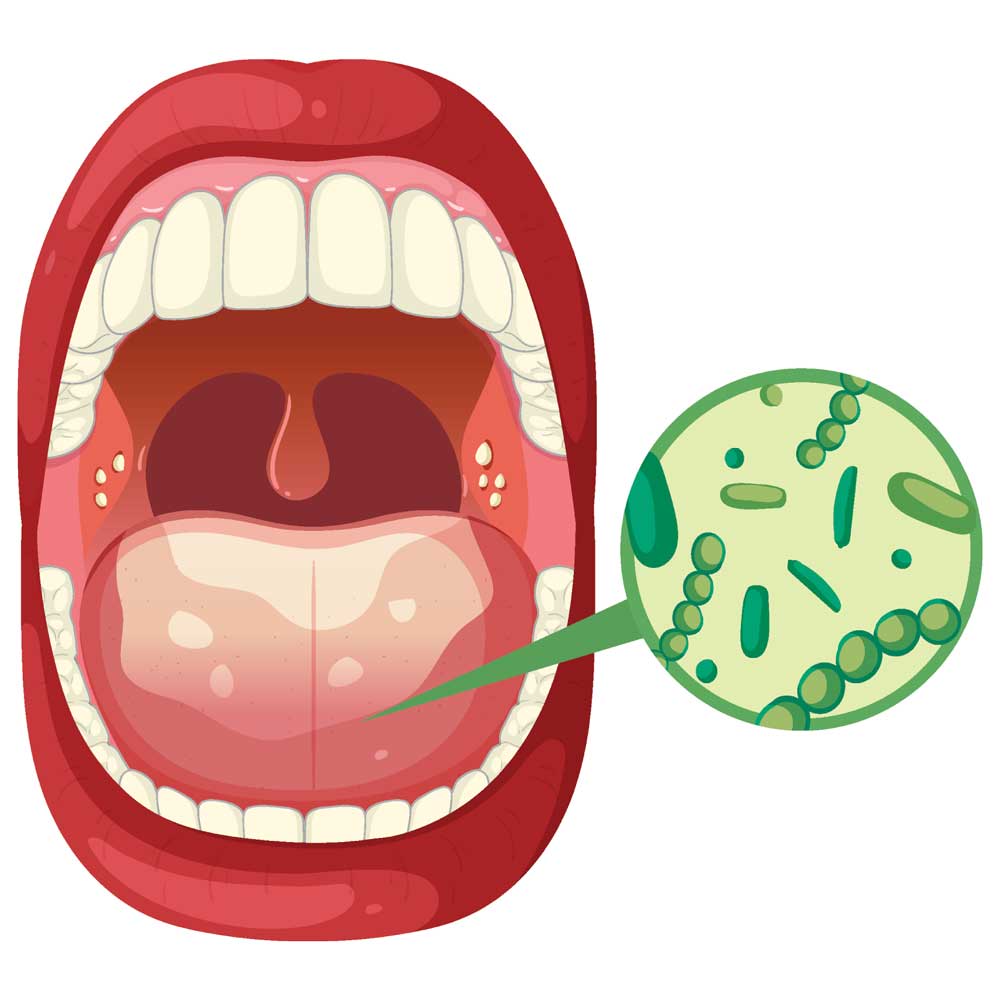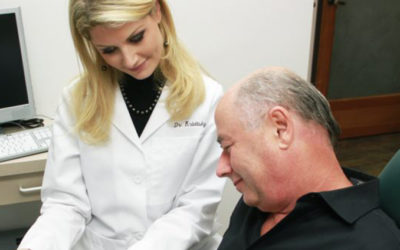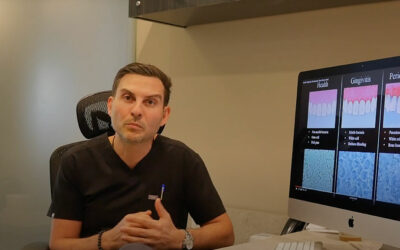Understanding the Microbiome of the Mouth: Why Balance Matters for Gum Health
The mouth’s microbiome is a diverse community of bacteria, viruses, fungi, and other microorganisms living in balance (or imbalance) within the oral cavity. These microscopic organisms play a critical role in everything from digestion and immune function to the development and reversal of gum disease.
At the Center for Advanced Periodontal & Implant Therapy in Los Angeles, we’ve been on the forefront of microbiome-based treatments, including nonsurgical gum disease therapy and regenerative techniques that align with the body’s natural biology that promote long-term healing.
What Is the Oral Microbiome and Why Does It Matter?
The oral microbiome includes more than 700 species of bacteria, along with yeasts, protozoa, and viruses, living across the teeth, tongue, cheeks, and gums. While some microbes are potentially harmful, the vast majority exist in a symbiotic relationship with the human body.
According to the Docs Education, a balanced oral microbiome helps:
- Prevent overgrowth of pathogenic bacteria
- Regulate immune responses
- Maintain the integrity of soft tissue
- Initiate digestion through enzyme activity
But when the microbiome becomes imbalanced due to poor oral hygiene, stress, smoking, certain medications, or even hormonal shifts it can lead to oral dysbiosis, a precursor to periodontal disease.

How the Microbiome Influences Gum Disease
In a healthy state, beneficial bacteria act as a defense system, suppressing harmful microbes and supporting the body’s immune response. But, during dysbiosis, pathogenic bacteria thrive, triggering chronic inflammation.
The progression typically looks like this:
- Harmful bacteria colonize the gum line and form sticky biofilms (plaque).
- The body reacts with inflammation, which damages the surrounding gum tissue.
- If unchecked, inflammation becomes chronic, leading to periodontitis, gum recession, and bone loss.
The National Institute of Health notes that more than 42% of all adults older than 30 have some form of gum disease. Almost 8% have severe periodontal disease, and research increasingly points to the microbiome as a key factor in both onset and treatment success.
For many patients, gum disease continues progressing even with regular brushing and flossing because the underlying imbalance has not been addressed.
Modern Periodontal Therapies That Support the Microbiome
At our practice, effective periodontal therapy begins at the microscopic level. Traditional methods, like scaling, root planing, or even surgery, focus on removing infected tissue. Still, they may not fully address the microbial imbalance that caused the disease in the first place.
Our work, including The Bonner Method, is built around the idea that biofilm disruption and immune modulation are key to lasting healing. As discussed in this article, we’ve seen that restoring a healthier microbial balance creates the right conditions for gum tissue to recover without cutting or stitches.
Real Patient Case: Restoring Balance Through Microbiome-Based Therapy
One of our patients, a 45-year-old woman named Maria (name changed for privacy), came to us after years of battling chronic gum inflammation, bleeding, and gum recession. Her symptoms kept returning despite consistent brushing, flossing, and even undergoing multiple deep cleanings at other clinics.
Using advanced microbial diagnostics, we discovered her oral microbiome was significantly imbalanced, dominated by pathogenic bacteria despite outwardly “clean” teeth.
We implemented our microbiome-focused protocol, combining biofilm disruption through the Bonner Method with immune support and regenerative techniques. Within three months, her inflammation reduced dramatically, bleeding ceased, and her microbial profile began shifting toward a healthier state.
Six months later, Maria not only avoided surgery but also gained back measurable soft tissue volume and stability. This transformation illustrates how restoring microbial balance can break the cycle of infection and promote true healing.
Advanced Platelet-Rich Fibrin (A-PRF): Regenerative Healing at the Microscopic Level
Another tool we use to restore microbial harmony is Advanced Platelet-Rich Fibrin (A-PRF). A-PRF is derived from the patient’s own blood and contains high concentrations of growth factors, platelets, and immune cells. When placed in areas of inflammation or tissue damage, it:
- Stimulates tissue regeneration
- Modulates inflammation
- Enhances local immunity
- Creates a biologically favorable environment for beneficial microbes to re-establish themselves
The use of A-PRF has shown promise in periodontal regeneration and in creating conditions that discourage the recolonization of harmful bacteria, making it a natural complement to microbiome-centered care.
Several peer-reviewed studies (e.g., Miron et al., 2017) support the efficacy of PRF in wound healing and soft-tissue management, particularly in periodontal therapy.
Preventing the Cycle of Infection and Inflammation
Patients who’ve struggled with chronic gum disease often find themselves in a cycle of infection, treatment, and reinfection. Breaking that cycle means going beyond surface-level care. Treatments like the Bonner Method and A-PRF focus on preserving healthy tissue, disrupting harmful biofilm, and re-establishing conditions promoting a stable oral microbiome.
This is not only essential for long-term gum health but supports better systemic wellness overall.
It’s About Balance, Not Bacteria Elimination
One of the biggest misunderstandings in gum disease treatment is the idea that the goal is to “kill all bacteria.” In fact, a sterile mouth would be a harmful mouth. The goal is balance, not eradication.
As we explain in our blog on dispelling myths about periodontitis, simply removing plaque doesn’t guarantee healing. It’s just the start. What truly restores gum health is rebuilding a stable ecosystem where beneficial bacteria can flourish again and chronic inflammation no longer dominates.
The Connection Between the Oral Microbiome and Whole-Body Health
Because the oral microbiome is closely connected to other microbiomes in the body (like the gut and skin), we recognize that oral health is systemic health. Patients with chronic gum disease often experience overlapping conditions such as:
- Cardiovascular issues
- Insulin resistance
- Respiratory complications
- Autoimmune flare-ups
By supporting microbial balance in the mouth, we also support wider systemic regulation and immune health. This is the future of periodontal care, and it’s already here at our Los Angeles clinic.
Looking Ahead: A Healthier Future for Your Mouth
The future of gum disease treatment lies in understanding and supporting the body’s biology, starting with the smallest organisms in your mouth.
“We’ve moved past the idea that treating gum disease is only about cleaning or cutting. True healing begins when we respect the biology of the mouth, especially the balance of the oral microbiome. Our goal is to restore that balance so patients can achieve lasting health, not just temporary relief.” — Dr. Alexandre Aalam, Board-Certified Periodontist and Co-Founder of the Center for Advanced Periodontal & Implant Therapy
At the Center for Advanced Periodontal & Implant Therapy, we are committed to offering science-backed, minimally invasive solutions that help patients heal in a deeper, more sustainable way.
If you’ve been dealing with bleeding gums, persistent bad breath, or a history of gum problems that never seem to go away, it may be time to look beneath the surface. We’re here to help.
Why We Focus on Microbiome-Friendly Periodontal Care
We don’t treat “gum problems.” We treat people by addressing the underlying biological environment, not just the surface symptoms. Our nonsurgical therapies are designed to work with your body, not against it.
Whether you’re experiencing early-stage gingivitis or advanced periodontitis, our team offers:
- Comprehensive diagnostics to assess your microbial risk factors
- Minimally invasive treatments that promote natural healing
- Follow-up care that considers your long-term microbial health
Ready to restore your oral health from within?
If you’ve struggled with gum issues that don’t improve or keep coming back, it might be time to look deeper. Our team combines cutting-edge science with compassionate care to help you heal.
You May Also Like...
The Real Cure for Periodontitis: Dispelling Myths About Gum Disease Treatment
Periodontitis, commonly known as gum disease, has long been regarded as a chronic condition that can only be managed,...
Senior Periodontal Care and the Challenges Aging Presents
As we journey through the stages of life, there's one aspect that demands consistent consideration — our oral health....
Revolutionizing Gum Disease Treatment: A Non-Surgical Approach to Healing at the Microscopic Level
Gum disease is a widespread oral health issue that affects millions of people around the world. Left untreated can...



